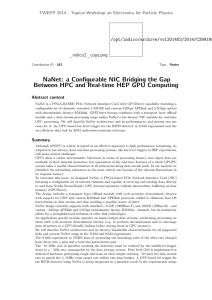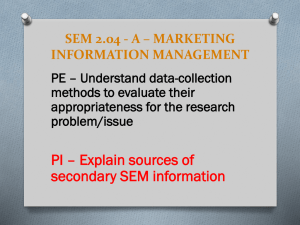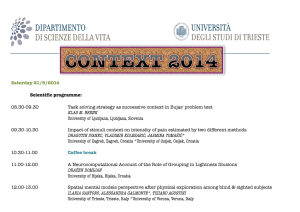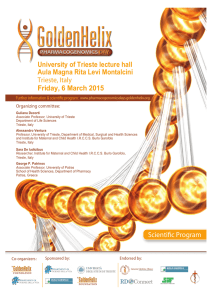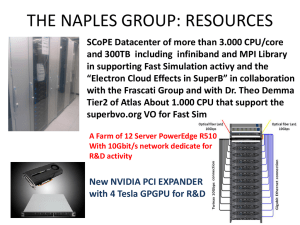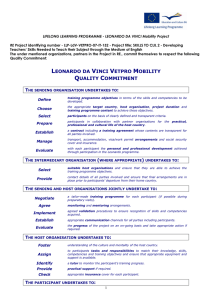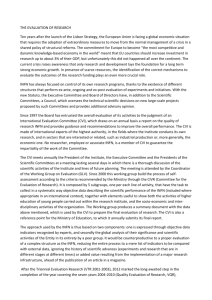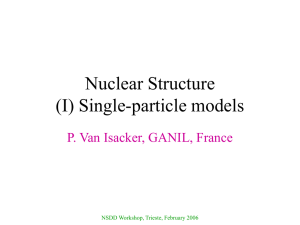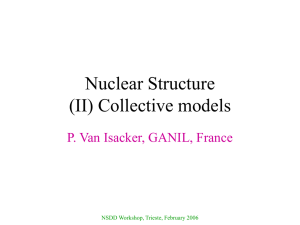Calocube
advertisement
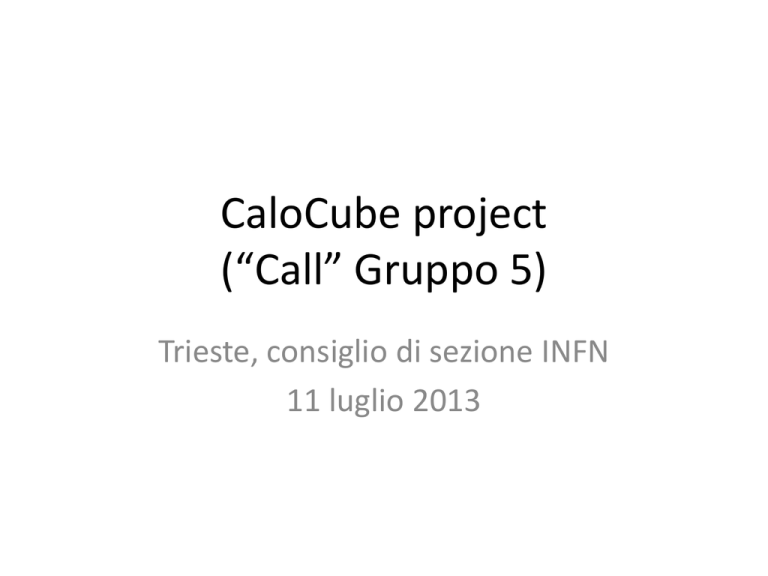
CaloCube project (“Call” Gruppo 5) Trieste, consiglio di sezione INFN 11 luglio 2013 Participants • • • • • • Project name: CaloCube Research area: Detectors Scientific responsible (PI) of the project: Oscar Adriani Local PI: Diego Cauz Duration: 3 years Participating research units – – – – – – – INFN Sezione di Trieste and g.c. Udine INFN Sezione di Pisa INFN Sezione di Firenze INFN Sezione di Pavia INFN Sezione di Catania Fondazione Bruno Kessler (FBK) IMCB-CNR 2 Aim • Construction of a calorimeter with an innovative design with applications in – Space Physics • Future missions possibly interested: HERD, GAMMA-400 – High-Energy Physics • to precisely measure the charge and the energy of high energy nuclei and electrons • to properly separate hadronic from electromagnetic particles 3 Scientific goals • Measurement of the energy spectrum of the nuclear component of cosmic rays (CR) in the region of the knee (E~1015 eV) • Measurement of the electromagnetic component of CR above the TeV region • Establishing a proof of principle for homogeneous, very fine hadronic energy resolution calorimetry • A first step for innovative calorimeters in future collider experiments 4 Design • Highly isotropic and homogeneous – High geometrical acceptance: detection capability for particles from any space direction – Minimize sampling fluctuations to increase energy resolution • Fine 3D sampling capability – Crystal dimensions (3-5)3 cm3 – Exploit shower topology, e.g. distinguish between e.m. and hadronic showers: high discriminating power for hadrons/nuclei vs. electrons – Optimize leakage corrections 5 Design (cont’ed) • High hadronic energy resolution through compensation techniques – 2% for electrons between 100 GeV and 1 TeV for space physics – 16% (for space physics) and 30%/sqrt(E) for HEP – measurement of the em fraction via Cherenkov light detection – detection of evaporation neutrons from nuclei in the had fraction • Measurement of the particle’s charge (Z) 6 Activity • Construction and extensive tests of a reasonablesize prototype • Optimization of design • Choice of the active materials • Selection of the optical sensors (e.g. large area, low mass, high gain photodetectors (SiPMs)) • Optimization of the Cherenkov light collection • Optimization of the neutron component identification 7 Activity (cont’ed) • Tests on beam with – highly ionizing low-energy nuclei – high-energy electrons and hadrons – @ CERN, FNAL, LNF, LNS facilities • Development of software algorithms for event reconstruction and performance optimization 8 Milestones O ptim i zati on of ge ometry an d materi als 1^ sem 2^ sem Ph ase 3 (C omplete fi nal prototype ) Assembly and characterization in laborat ory Beam test at SPS 4^ sem 5^ sem 6^ sem x Ph ase 1 (Basi c syste m) P rototype for scintillation light readout with space qualified techniques Z syst em prot otype Beam test at LNS and Cern Ph ase 2 (System with multiple readou t for Chere nkov an d neutrons ) Optimization of the Cherenkov light collection and test at BT FLNF Optimization of the neutron signals and test at LNS 3^ sem x x x x x x x Trieste/Udine group’s task • Development and test of CASIS1.2B ASIC – It is an evolution from the family of low-noise, widerange CASIS ASICs designed at INFN-Trieste – Charge-sensitive dual-range preamplifier, with automatic real-time gain control network – 16 channels serially multiplexed onto a single analog bus – maximum dynamic range of 53 pC – noise less than 2300 electrons – A/D conversion integrated on-chip via a 12-bit ADC for each channel 10 Trieste/Udine group’s task (cont’ed) • Design and construction of – electronic boards and power control ASICs – electronic boards for an FPGA-based data acquisition • Simulation activity to complement the work of design and characterization of the detectors – packages like Fluka and GEANT4 will be used 11 Trieste/Udine group’s task (cont’ed) • Quality control of existing materials – transmittance, light yield, time response – optimization of materials for scintillation, Cherenkov and neutrons – capability of distinguishing between Cerenkov and scintillation signals – bench tests with lasers and cosmics – exposure to particle beams at FNAL 12 Trieste/Udine group’s task (cont’ed) • Simulation studies of performance – with an emphasis on leakage corrections • Development of photo-detector assemblies • Calorimeter module – construction and test – analysis of test beam data 13 Anagrafica e richieste • Partecipanti Ts-Ud: – – – – – Giovanni Pauletta 20% Diego Cauz 20% (resp. loc.) Anna Gregorio 20% Valter Bonvicini 10% Tot. 0.7 FTE • Richieste ai servizi di sezione: – Servizio elettronica e rivelatori 2 m.u. • Test di SiPM e di elettronica di front-end – Servizio officina meccanica 1 m.u. • Assemblaggio rivelatori-cristalli • Richieste finanziarie: in fase di definizione 14
![locandina dottorandi [modalità compatibilità]](http://s2.studylib.net/store/data/005259821_1-9e349e4e3bf89f1cc48d1fe5ca196528-300x300.png)
